Here we are again with another wife of an artist who was also an artist, my current obsession. Again, I get to be disappointed in myself as I love this woman's husband so why hadn't I taken more notice of her? Interestingly, some of what I'm about to talk about I mentioned in this post back in 2015 (when we were all so much younger and gayer etc etc). That was a post on the smashing John Collier and today we're going to talk a bit more about Marian Huxley Collier, his first wife. Yes, 'first wife', buckle up...
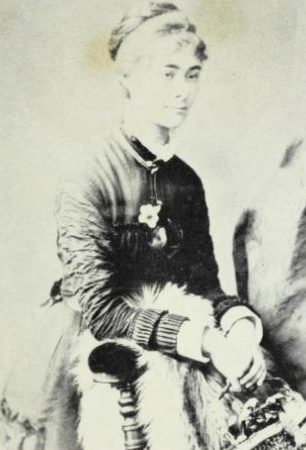
Marian Huxley Collier (c.1860s)
Luckily for young Marian, she was born a Huxley, her father being Thomas Henry Huxley (1825-1895), President of the Royal Society and massive Darwin fan, so there is quite a bit written about her early life in the biographies of her father and family. Her nephew was Aldous Huxley, so we're not exactly short on details of her, however I am beginning to feel that we lack nuance in certain descriptions, which leads me to my second current obsession, but we'll come to that later as it's a bit of a spoiler. Anyway, Little Marian was the Huxley's third child after Noel, born in 1856 and Jessie Oriana, born in 1858. Marian was only a baby when the family caught scarlet fever in 1860. Her mother, Henrietta, was pregnant but managed to get through it, 2 year old Jessie caught it lightly and somehow Marian escaped it altogether. However, 4 year old Noel died and devastated the family.
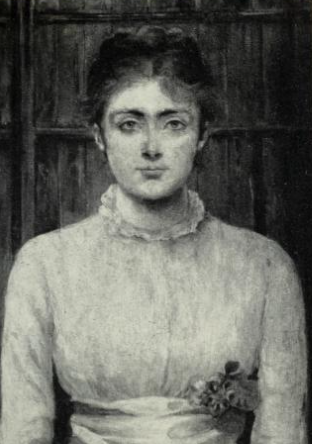
Jessie Huxley (c.1880) Marian Collier
Luckily, baby Leonard (Aldous Huxley's Dad) was born safely the same year and was followed by Rachel in 1862, Henrietta (or 'Nettie') in 1863, Henry in 1865 and lastly Ethel in 1866. That is a lot of children very quickly but then they were a wealthy family. In the 1861 census, the family are in Folkestone, living at Albion Villas with four servants. Honestly, when there are more servants that employers in a house, you know there is money, especially early in a marriage. After the death of Noel, in 1861 the fractured family went to stay with the Darwins at Down House (which is very much worth a visit). Whilst there, according to Adrian J Desmond's 1997 biography of her Dad, Marian was a favorite of the Darwins, who found two year old Marian to be bright and determined. They recorded that she 'wins golden opinions, but will not be tempted into any demonstration of affection'. I find that a very interesting comment which possibly says more about the first years of her life in the shadow of her brother's death, than possibly about the child herself. Known affectionately as 'Mady' or 'Maidy' (I've found both, but mostly the former) even as a toddler, Marian seemed interested in drawing, holding a pen on the lap of one of the Darwin family, attempting to draw her father and getting frustrated when it didn't come out as well as she'd hoped.
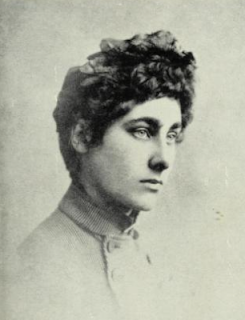
Nettie Huxley (c.1880)
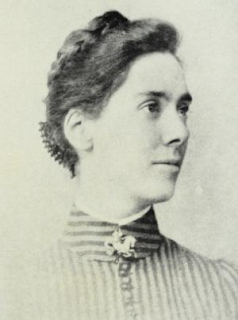
Rachel Huxley (c.1880)
For such a science-y family, it is interesting how artistic society overlapped and the Huxley home welcomed in artists such as Briton Riviere. I'm guessing that intellectuals of a modern age, no matter their discipline, are happy company together. When Jessie and Marian became interested in pursuing art seriously, they would take the Underground to drawing class at the Slade. Teenage Marian was discribed as a 'skittish tease', flirting playfully with Frank Darwin, and despite being described as 'frail' seems to have had spirit and an interesting disregard for being absolutely proper. She is also described as being very much like her father, but we'll come to that in a bit.
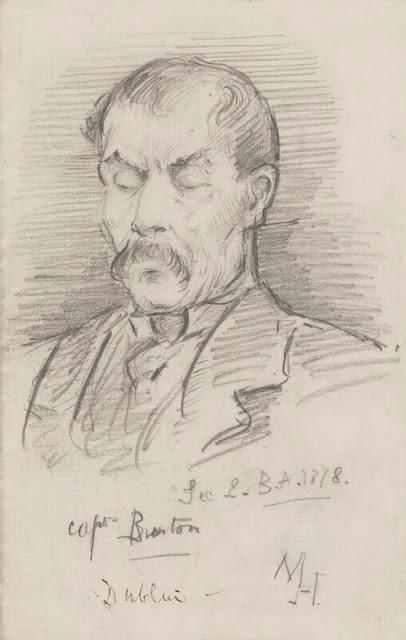
Sir Richard Francis Burton (1878) Marian Huxley
Marian's talent is easy to see in her pictures from her teenage years. Her portraits of Edward Hartpole Lecky, Burton and Darwin are all held by the National Portrait Gallery and were done when she was 17-18 years old, which is impressive. An article in the Sketch from 1895 mentioned her time at the Slade as part of an article on the success of the women artists who had attended, which included not only Marian but also Bertha Newcombe who drew the illustrations and also Dorothy Tennant and Evelyn De Morgan.
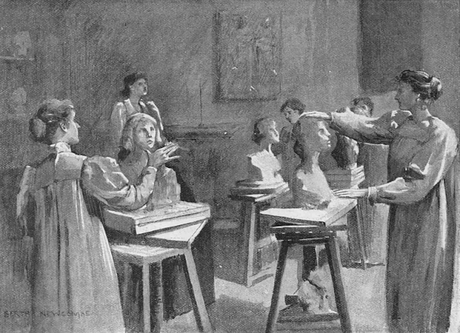
The Sculpture Class at the Slade
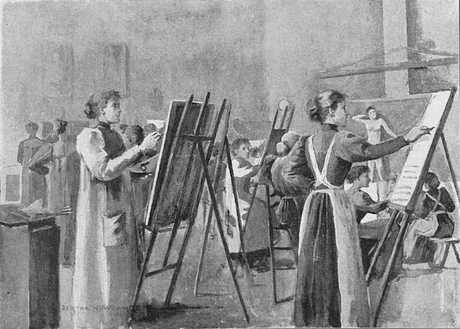
The Life School at the Slade
Marian did well at Slade, and it is possibly while there that she met John Collier. Collier was the younger son of Sir Robert Collier, former Attorney General, Lord Justice of the Privy Council and heading toward being Lord Monkswell. I'm not obsessed with how many servants everyone had, but they had 15! This is not a competition, but that's impressive. Sorry, I was distracted by the army of maids. Anyway, again conveniently, John's older brother Robert Collier, future Lord Monkswell married Mary, Lady Monkswell, who kept and published her diary (thank you very much Lady Monkswell). When Robert and Mary were brought to meet Marian as their prospective sister-in-law, Mary described her as 'quite the artist's wife, her hair comes down, she forgot the band to her dress, she is always wanting pins etc. She is a dear child full of brightness and life.' John was immediately absorbed into the chaotic Huxley family and beloved by his new parents-in-law, his many new sisters and brothers. When Jessie married in 1878, John was instructed to help with seating the congregation, which he did to their approval. He was described as being small, fair, with good features and glasses. He stuttered but not when making a speech or acting in a play. He was clever, a quality that made him perfect for both Marian and her father.
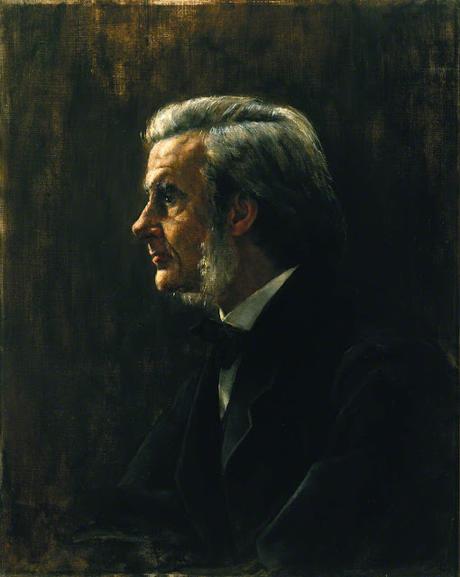
T H Huxley (1875-85) Marian Huxley
In Mary Collier's diary, she recorded how happy John (known as Jack to his family) and Marian were, and how lovely the Huxleys were - 'Mrs Huxley is about 45, she seems to adore her clever husband & has suffered in a way that made my hair stand on end at the story [presumably about Noel]. Old Huxley is a wonderful looking man, such deep piercing eyes, which peer out from between long hairs in his eyebrows in a manner quite uncanny...What I like about the family is the way they all seem to care so much for each other & they are all so very bright.' The repeated mention of the intelligence of the family will become significant later, but I find it interesting how it is a constant mention. I've also read passing comments that Marian was extremely pretty but for once the descriptor used is intelligence. I would be delighted if I didn't know that there is a bit of hindsight at work in a lot of these descriptions and I wonder if Mary Collier's editor had the outcome in mind when presenting Marian in the diary.
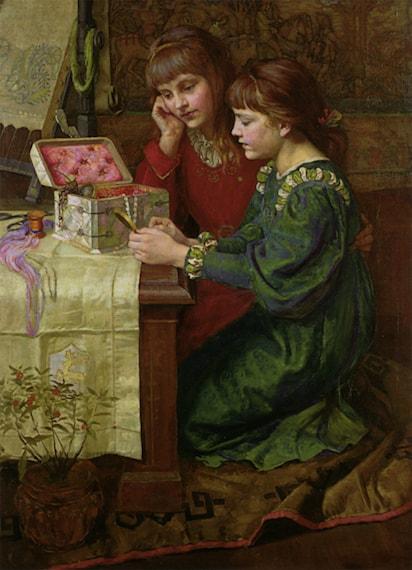
Treasures (c.1878-82) Marian Collier
Anyway, the Huxley and Collier families were joined in marriage - thanks to Mary, we have a bit of a description - 'Marian's rosy face looked extremely happy & the cream coloured satin hung well on her long slim figure.' However, poor old Mary didn't catch much of the wedding because she had to keep her son 'Bino' (known to everyone else as the 3rd Lord Monkswell, Robert Alfred Hardcastle Collier) from shouting the house down, aged 4. The wedding was a meeting of science and art, with guests such as Joseph Hooker, Herbert Spencer and the Alma Tademas (Mrs Alma-Tadema was wearing a 'most wonderful garment which looked like a cream coloured pillow case'). As the couple departed for honeymoon, Mary noted 'I never saw two happier brighter faces'.

John Collier (1882-3) Marian Collier
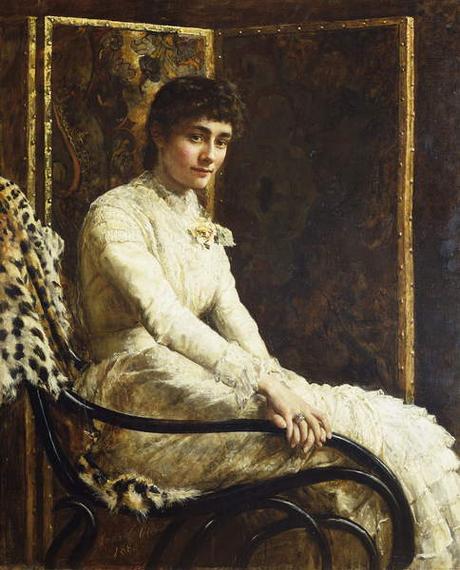
Marian Huxley on her Wedding Day (1880) John Collier
The beginning of their married life seems idyllic. They were wealthy, living in More House which had been designed by Frederick Waller, Marian's cousin, at 52 Tite Street. Their neighbours over the years included Whistler, Singer Sargent, Wilde, Anna Lea Merritt and all manner of other famous artistic sorts (see Devon Cox's The Street of Wonderful Possibilities for details). In February 1880, they took part in a play written by Jack and Walter Pollock, and Walter joined them in the performance. Mary's description of the group gives an idea of what you could get away with if you were posh and it was a play - 'We have had several most amusing rehearsing dinners and teas. Last night I declare it was a perfect orgy, the more Walter embraced Marian in the last scene the more angry Jack became. I roared with laughter. I have a very small part in which I make violent love to Jack so I don't mind.' For the play, which seemed to center around an artist and his model (played by Walter Pollock and Marian), John Collier produced a portrait of his wife in a big white hat. The play had four performances with about 110 people in the audience each time.
Marian's portrait of her sister Nettie was exhibited with her husband's portrait of her in the Grosvenor Gallery in 1880, and her painting The Gambler's Daughter was hung well at the RA beside a multitude of John's paintings. It is interesting to see what pictures of theirs were hung at the same exhibition, for example this one...
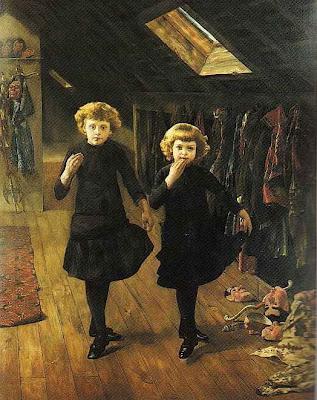
The Rehearsal (1882) Marian Collier
...was hung in the same exhibition as this one...
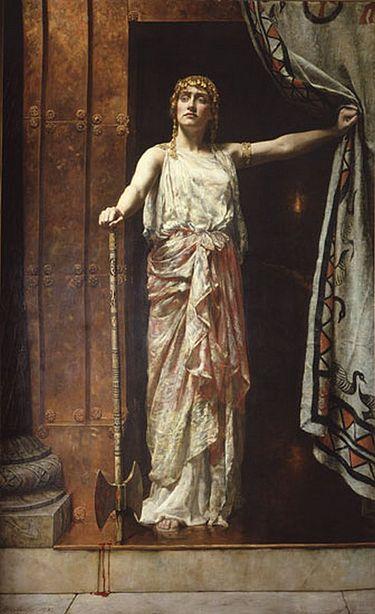
Clytemnestra (1882) John Collier
In the 1881 census, John and Marian, awaiting the completion of their new home in Tite Street, are listed as staying with his father on the Chelsea Embankment with the 15 members of staff (15! sorry). He is listed as a painter and Marian has no profession, which enrages me no end, especially as they are literally hanging in the same galleries and shared a studio. In 1882, Marian was included in the Lancashire Ladies Art Society Christmas exhibition, alongside artists like Lady Butler, Florence Claxton, Kate Perugini and Louise Jopling.
Marian's paintings drew very favourable reviews, for example By the Tideless, Dolorous, Midland Sea of 1884 was described as 'one of the most successful' depictions of a nude figure - 'The figure is drawn with surprising skill and obvious knowledge of form and all its varying delicate contours are admirably modelled.' Her portrait 'of a handsome girl' was praised in 1884 in the Freeman's Journal because it would 'haunt many memories this season'. The paper was quick to point out her connection to John Collier - 'wife of the portrait painter and like Mrs Alma Tadema, painter as well as a painter's wife.' Blimey, I wonder how Laura Alma Tadema felt about being part of such an illustrious club? Marian's illustrations for Little Songs for Little Voices by Alfred Scott Gatty seems to have come into print in around 1880 and remained reprinted for the rest of the century. The Graphic called the pictures 'excellent, and will charm not only intelligent children, but also their parents and caretakers.'
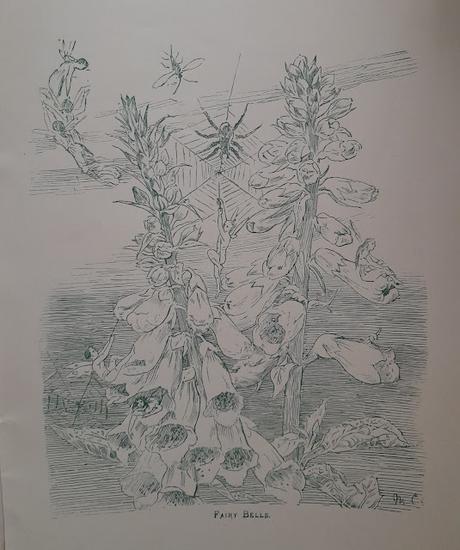
Illustration for Fairy Bells from Little Songs for Little Voices
In 1884, Marian gave birth to Joyce, the couple's first and only child. According to biographical accounts, Marian suffered overwhelming post-natal depression, refusing to leave her bed or eat. John employed 2 attending maids and a nurse who specialised in 'melancholia'. Her recovery was gradual but eventually she returned to the studio and to exhibiting. I can't find much record of her exhibiting between Joyce's birth and 1887 in the newspapers, in fact one of the few mentions is of her brother Leonard's wedding (to the niece of Victorian poet Matthew Arnold) in 1885. John and Marian are on the guest list and they gave an opal ring, but unlike Ethel and Nettie Huxley who were bridesmaids and Henry Huxley who was a groomsman, there is no mention of the Colliers actually attending. In one of the biographies of her father, Marian is described as taking 18 months to recover from post-natal depression, possibly explaining why they were absent from Leonard's wedding.
By 1887, Marian's health was not good. Her father wrote after visiting her that he couldn't bear her unhappiness 'when she knew she was going mad and I knew it too by her look of melancholia.' In desperation, John took Marian to Paris and into the care of Jean-Martin Charcot, a specialist in hysteria (we'll get to my feelings about that in a bit) who seemed encouraging that she could be cured. However, before she could start treatment at his now famous Salpêtriére School, Marian developed pneumonia. In the Illustrated London News of Autumn 1887, they reported that 'Bronchitis, and its twin brother and usual companion pneumonia or inflammation of the lungs, have been terribly busy during the foggy days that have afflicted Londoners during the last few weeks...These sadly common lung attacks are insidious as they are fatal.' It isn't known whether Marian was already ill when she left for Paris, but on the 18th November she died, aged 27.
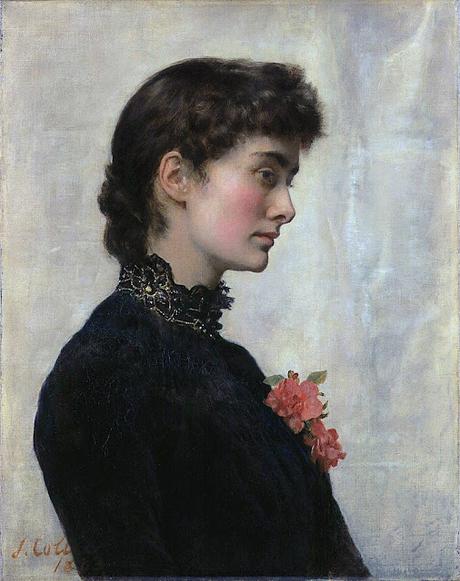
Marian Collier (1882-3) John Collier
Her obituaries were interesting. Having a famous father and husband slightly overshadowed her own achievements and death, as some of the pieces got carried away talking about John's work (for which, apparently Marian was the constant model, which patently isn't true, thank you Shields Daily News). The Illustrated London News reported that 'Though her husband's admirable art work no doubt stimulated and encouraged her efforts, yet her style was her own and not a mere copy.' (I wonder if it has ever been said vice versa?) Marian is described repeated as 'gifted and talented', although the Bristol Mercury calls her 'the wife of the able portrait painter and herself an amateur artist of promise.' Ouch. The family's response was difficult but honest, with her father writing that 'Rationally we must admit it is best so...although man is not a rational animal - especially in his parental capacity.' He repeats that Marian's death was for the best, although it had broken her mother's heart. When I first read that I was horrified as I can't imagine ever feeling like that about my child, but God willing I will never be in their place and the understanding of what was going on with Marian's mental health is largely based on fear and misunderstanding when it was called 'hysteria' and 'cured' with hypnotism.
Sowe have my other current obsession - how we speak about people in the past, especially women with mental illness or neurological difference. If I have taken anything away from Marian it has to be how rubbish we are about talking about mental health in biographies. We need to do better. I think a large slice of the problem is that it is often women's mental health that is so massively misunderstood and problematic to men and also a bit on the periphery of the main action so it is not looked at in any depth. It is only when you take that person and make them your focus that it is easy to spot laziness in repeating back past ignorance. For example in Adrian J Desmond's 1997 biography Huxley, Marian is described as 'talented, unstable' and 'she would die mad in 1887.' That is appalling and inaccurate - she died of pneumonia and 'mad' is not a word we should be just using as a diagnosis these days. Nor is 18 months worth of post-natal depression an accurate signifier of anything - I had crippling post-natal depression, for which they confined me to hospital for a week after Lily's birth, for 18 months. Turns out, 18 years later, I can see it was undiagnosed autism having a bit of a moment. The repeated references to how gifted, unconventional and spirited Marian was are frustratingly not linked to her later depression or mental crisis. The fact that she is also described as 'just like her Dad' who seems to have the strongest repulsion over her mental distress is also fascinating. Interestingly, her sister Nettie, who called her daughter Marian, also caused the family some consternation with her 'eccentric' behavior. These are wealthy, educated, privileged people and so I wonder if that privilege shields or exposes any sort of neurodivergence? I'm not saying that Marian was simply neurodivergent and the silly Victorians didn't understand that (although they massively didn't) but that things like autism have comorbidity with other conditions, like anxiety and depression, but if we are not understanding the bottom line of the person's mental state, then it's all just going to be written off as 'madness'. I understand their contemporaries saying that, but come on, it's over a hundred years later, we need to sort that out.
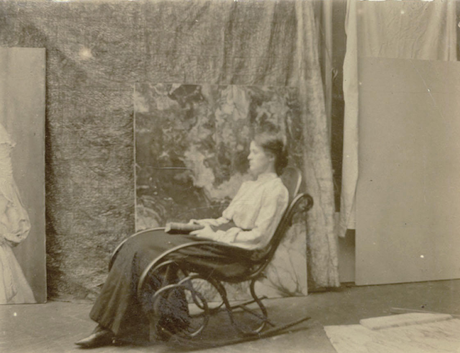
Joyce Collier (1903)
Anyway, I have a couple of postscripts. In 1889 John Collier married his sister-in-law Ethel Huxley in Norway. The Huxley family were remarkably stoical about it all - they liked him, they were used to him, why not keep him as a son-in-law? John's own family were not so forgiving, which reminds me eversomuch of the same position Holman Hunt found himself in when he married the Waugh sisters. The Deceased Wife's Sister bill would still be in effect until 1907 but there was less concern about it and more sympathy in 1889. Lady Monkswell however was never on good terms with her brother-in-law again. John died in 1934 and Ethel died in 1941. Joyce lived until 1972, having her own career as a miniature artist.
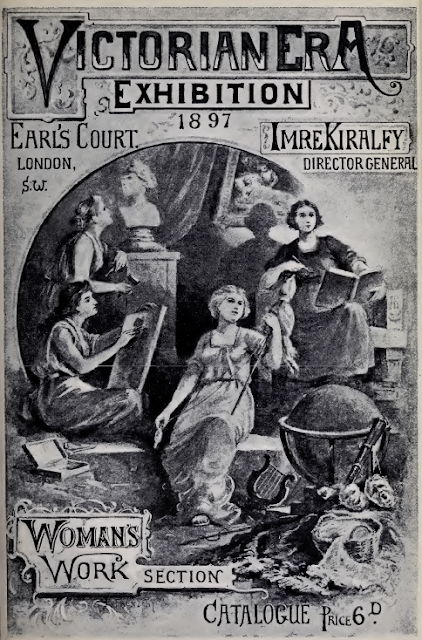
Finally, I'm pleased to say that despite the slightly dismissive obituaries, Marian's reputation as an artist remained strong, at least within the 19th century. The children's song book seemingly was reprinted many times and in 1897, her works were included in the 'Woman's Section' of the Earl's Court Victorian Era Exhibition. The section was reported as representing 'the diversity and the excellence of women's pictures' which had been selected and hung by Henrietta Rae, aided by her husband Ernest Normand. Marian was represented by around 8 works including her portrait of her husband and The Rehersal. Along with many other women, also now lost in history, she was seen as the pinnacle of women's art in this country, a marker of what it meant to be an artist in 19th century England with the caveat of 'woman'. I have been asked on more than one occasion if women artists were lost in time because they just weren't as good as the men. Whilst that is simply not true, it is easy to see how someone like Marian, a professional artist, was forgotten if she didn't list herself as a professional artist in census and if, despite having a string of paintings at the RA and other galleries, was still called an 'amateur' in her obituaries and it has to be discussed whether or not she 'copied' her husband's work. It's too simplistic to say we forgot her; her contemporaries did not value her enough to tell us to remember her and all those other female artists filling the walls of the Victorian Era Exhibition.
We have work to do.

